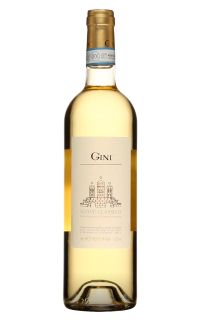This family has a long history in the Soave Classico region of viticulture. In 1987, Sandro and Claudio embarked on a brand-new journey. On a motorcycle ride through the Val Tramigna hills, they stumbled onto a unique area in the Campiano region with clay-limestone soil that was equivalent to the finest French Crus. A steady breeze and excellent sun exposure in high-altitude vineyards offered an invitation to use cutting-edge agricultural techniques. They were the first to introduce a vineyard with such a dense plant population (12,000 vines per hectare) and minimal yield per vine. The Corvina, Oseleta, and Rondinella grape varieties were used to make Valpolicella and Amarone in 2000. Following that, a new manufacturing facility called "Tenuta Scajari" was founded. The title is a reference to the white calcareous rock plates that make up the soil.
Tenuta Scajari is located near Monte Mirabello just on the eastern Valpolicella hills at an altitude ranging from 400 to 600 meters. The wooded area surrounding the vineyards is abundant with mostly olive and cherry trees. Clay dominates the soil, with volcanic rock outcrops. The clay provides strength, sturdiness, and character, and the volcanic spots add finesse, delicacy, and mineral complexity, making this combination very successful. In addition to this stony terrain, the vineyards enjoy great sun exposure, a pleasant climate with appropriate temperature fluctuations, and light and continuous natural ventilation, all of which are beneficial to and aid the development of the grapes. This ensures the grapes will mature as best they can, a process that happens during the month of September.
In the centre of Tenuta Scajari's vines, the construction of a brand-new cellar and drying room began in 2010. The petrified seabed and the stone walls of the cellar's interior, which have been layered over the course of 65 million years by time, make the foundation. The basement is divided into three levels: the upper level has a fruit cellar that is perfectly situated for drying whereas the ground floor houses the wooden tanks used to make wine. The underground cellar is used to refine wine before it is stored in wooden barrels or bottles for the process of aging.
https://www.ginivini.com
Find out more

















